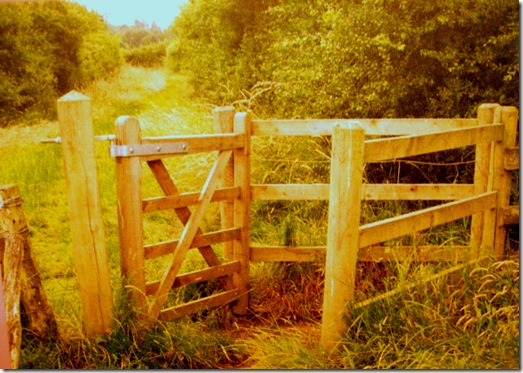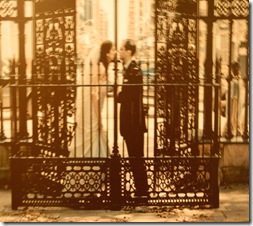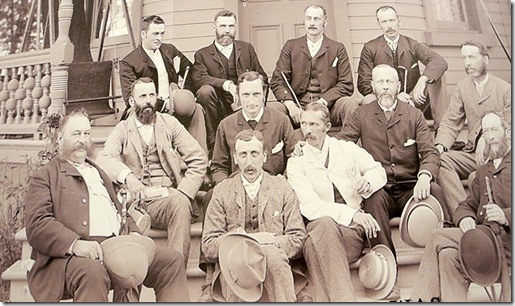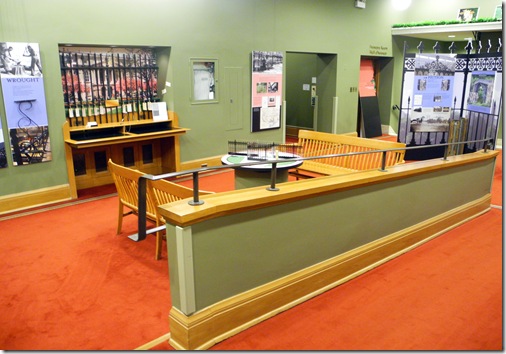Diagram of the fence in the exhibition at Osgoode Hall
The fence at Osgoode Hall, on the north side of Queen St. West, east of University Avenue in 1930. There are no tall buildings behind the City Hall Tower. Photo, City of Toronto Archives S0071, It.9428 (1)
On May 23, 1865, the firm of Cumberland and Storm received the contract for the construction of a cast iron fence around Osgoode Hall. The casting of the fence began in 1866, in the St. Lawrence Foundry. Even in those years, Toronto was a thriving industrial centre where raw materials and skilled workmen were readily at hand. The foundry was on Front Street, its grounds extending as far north as King Street, between Berkley and Parliament Streets. The firm produced cast iron for industrial and architectural purposes, such as the staircases of the Old City Hall and Victoria College. The stone for the footings of the fence were quarried from near Georgetown by the firm of Ramsey and Farquar. The installation of the foundations, the cast iron fence, and the gates were completed in Confederation year –1867.
People posing for a photograph in the quarry of Ramsey and Farquar in Georgetown in the 1860s.
The gates were designed after a type that at one time were common throughout Britain. Known as “kissing gates,” they consisted of two panels placed into the enclosure in a “V”-shape, with a small opening at the narrow end of the “V”. To pass through the gate a person moved around the panel to travel from one side of the gate to the other. If another person were passing through the gate in the opposite direction, at one point they directly faced each other, providing an excellent opportunity for kissing.
Anyone who has passed through the 20-inch opening of an Osgoode Hall gate can readily perceive the opportunities for a kiss. However, tradition says that the gates on Queen Street, with their narrow openings, were designed to prevent cows from passing through. This might have been a possibility when the east wing of the hall was constructed in 1829, as the site was to the northwest of the town of York. However, by the year 1866, the city had grown considerably and extended into the area where Osgoode Hall was located. The design was likely an attempt to mimic the styles of Mother Britain.
A rural “kissing gate,” which required no latch.
The design of the Osgoode Hall fence (left), modelled after a “kissing gate” (right)
This photo shows the members of the Architectural Guild at Long Branch in August of 1888. William Storm, who designed the fence, is the gentleman in the front row, on the left-hand side. Born in Yorkshire, England in 1826, he and his father immigrated to York in 1830. His father became a prominent Toronto builder. William Storm trained in the offices of William Thomas, and later formed a partnership with Frederic Cumberland (Cumberland and Storm). They received the contract for the 1856 renovations to Osgoode Hall.
A section of the display area in Osgoode Hall, a model of a “kissing gate” on the small round table in the centre of the room.











Thanks for this. Your dedication helps us explore and appreciate the history of our city.
I so hope this fence STAYS after Metrolinks does it’s work. I love the gate and the fence